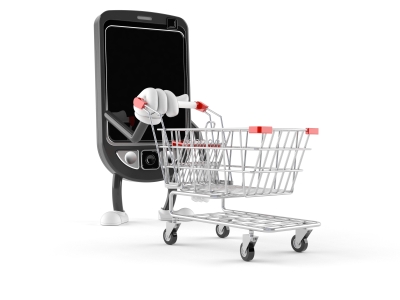Before the days of online shopping it was required that you travel to the store, find a parking spot, walk through crowds, and stand in long lines, just to make a simple purchase. Now, with the power of online shopping and mobile devices, you can sit on the couch in your pajamas, press a few buttons on your phone or tablet, and purchase the same product. As the popularity of this simplified method of shopping grows, it is expected that 167 million people will shop online this year and spend an average of $1,800.

Along with online shopping and mobile devices, the power of social media has a large impact on the way consumers shop. Instead of buying a product that they may know very little about, consumers are now researchers. Before making a purchase, many consumers read what other people think about products by logging on to social media sites. Social media users trust what their friends, family, and even strangers say online about a brand or product. Approximately 51% of online shoppers consider social sites as valuable and credible resources for researching products and services.
In-store shopping decisions are also affected by social media, as consumers use their mobile devices to look at reviews and ratings to reinforce their purchasing decisions. Along with reading reviews, 33% of smartphone users use their device to look for sales and specials. A new trend is the ability for consumers to scan bar codes to obtain additional product information or use other apps at the point of sale.
As consumer behavior changes, sales and marketing strategies must adapt. Businesses must market their products differently, make their brands more personal, and communicate with customers in new ways. One of the biggest concerns is keeping customers happy. With social media, consumers have the power to influence other shoppers through both positive and negative reviews. Positive reviews are always helpful, but businesses must monitor sites for negative reviews. It has been proven that one negative review has a greater impact on the consumer than multiple positive reviews. Responding quickly to a consumer complaint can actually foster loyalty and improve the company’s reputation.
While businesses must alter their strategies, they can also utilize the power of social media. Many businesses are now utilizing social media and smartphone data to analyze customer behavior and address their potential needs. The average retailer in the United States has almost 700 terabytes of stored data that can be used for multiple purposes including analyzing consumer spending patterns, adverting exclusive deals and offers, and improving target marketing. While utilizing data, businesses can also use social media to create a stronger relationship with their customers and increase brand loyalty. For example, Walmart utilizes Facebook for product advertising and marketing and has 20 million likes of Facebook.
As times change and technology improves continuously, businesses must stay ahead of the game and utilize every new opportunity to improve their sales, marketing, and customer loyalty. Technology gives consumers the power to research products, endorse products, criticize products, and much more. Businesses must work hard to keep consumers happy, but may also utilize these tools themselves. Learn more about pleasing consumers and utilizing social media and mobile devices by contacting the CommonPlaces Team.


